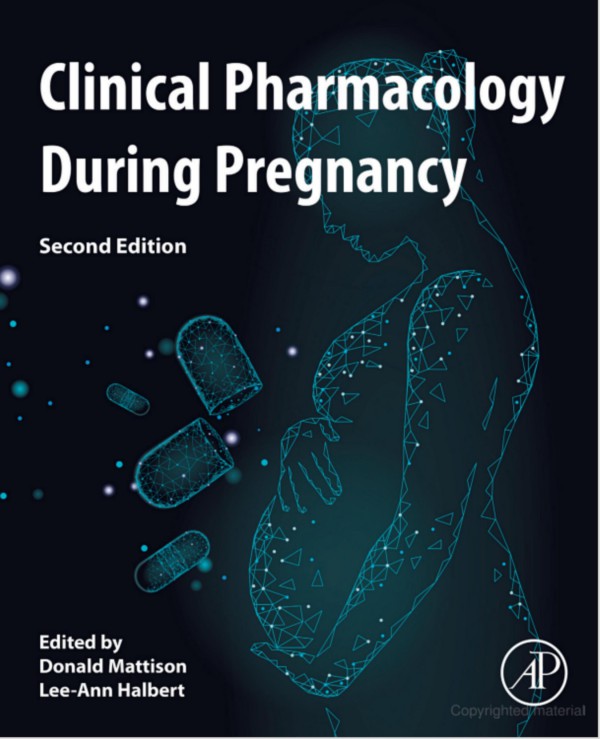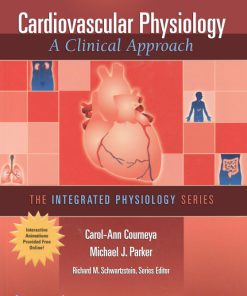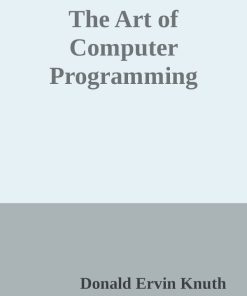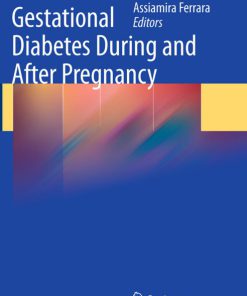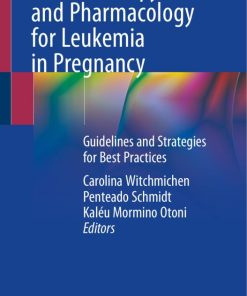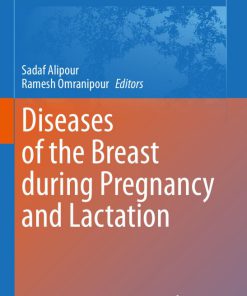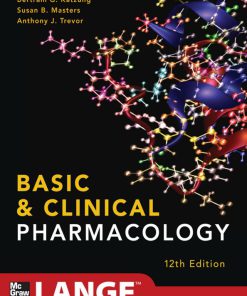Clinical Pharmacology During Pregnancy 2nd Edition by Donald Mattison, Lee Ann Halbert 0128189029 9780128189023
$50.00 Original price was: $50.00.$25.00Current price is: $25.00.
Authors:Donald Mattison , Series:Pharmacology [73] , Author sort:Mattison, Donald , Languages:Languages:eng , Published:Published:Jan 2023 , Publisher:Elsevier
Clinical Pharmacology During Pregnancy 2nd Edition by Donald Mattison, Lee Ann Halbert – Ebook PDF Instant Download/Delivery. 0128189029, 9780128189023
Full download Clinical Pharmacology During Pregnancy 2nd Edition after payment
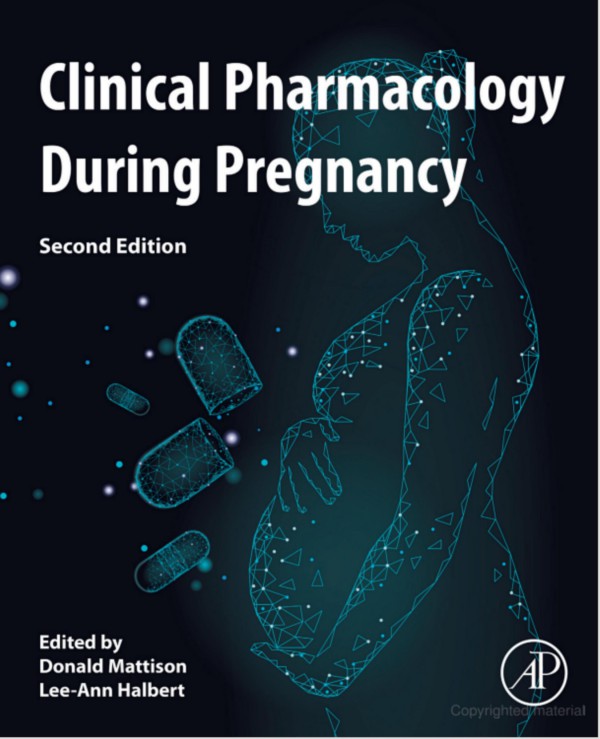
Product details:
ISBN 10: 0128189029
ISBN 13: 9780128189023
Author: Donald Mattison, Lee Ann Halbert
Clinical Pharmacology During Pregnancy, Second Edition is written for clinicians, physicians, midwives, nurses, pharmacists and other medical professionals involved in the care of women during pregnancy. The book focuses on the impact of pregnancy on drug disposition and includes coverage of treatments for diseases of specific body systems as well as essential content on dosing and efficacy. This update includes substantially expanded sections on the ethics of pharmacological research in pregnancy and physiologic changes, along with new sections on patient reported outcomes in pregnancy, delivery and postnatal care, and the use of pharmacokinetic and pharmacodynamic approaches to estimate maternal, placental and fetal dosing.
The broad range of this book encompasses analgesics, antiasthmatics, antidepressants, heart and circulatory drugs, vitamins and herbal supplements, and more. Topics in chemotherapy and substance abuse are also covered, as are research issues, including clinical trial design and ethical considerations.
- Uses an evidence-based approach for therapeutics during pregnancy
- Presents a summary of specific medications by indication, including up-to-date information on dosing and efficacy in pregnancy for the given indication
- Includes significant new sections on physiologic changes and the ethics of pharmacological research in pregnancy
Clinical Pharmacology During Pregnancy 2nd Table of contents:
Chapter 1. Introduction
Chapter 2. Physiologic changes during pregnancy
2.1. Physiologic changes during pregnancy
2.2. Cardiovascular system
2.3. Respiratory system
2.4. Renal system
2.5. Gastrointestinal system
2.6. Hematologic and coagulation systems
2.7. Endocrine system
2.8. Summary
Chapter 3. Impact of pregnancy on maternal pharmacokinetics of medications
3.1. Introduction
3.2. Effects of pregnancy on pharmacokinetic parameters
3.3. Summary
Chapter 4. Medications and the breastfeeding mother
4.1. Medication use by the breastfeeding mother
4.2. Clinical pharmacology of drug transfer into breast milk
4.3. During delivery
4.4. General anesthesia
4.5. Epidural anesthesia
4.6. Galactogogues including dietary supplements (including herbs)
4.7. Immediate postpartum period
4.8. Pain
4.9. Methadone
4.10. Resumption of prepregnancy medications
4.11. Psycho- and neurotropic drugs
4.12. Drugs not to give to the nursing mother postpartum
4.13. Oral contraceptives
4.14. Summary
4.15. Where to find information
Chapter 5. Fetal drug therapy
5.1. Introduction
5.2. Indications for fetal therapy
5.3. Strategies to achieve fetal drug therapy
5.4. Special considerations
5.5. Ethical considerations
Chapter 6. Treating the placenta: an evolving therapeutic concept
6.1. Introduction
6.2. The placenta as the therapeutic target: the past
6.3. The placenta: therapeutic targets
6.4. The placenta as a therapeutic target today
6.5. The placenta as a therapeutic target in the future
6.6. Conclusions
Chapter 7. Conducting randomized controlled pharmaceutical trials in the pregnant population: challenges and solutions
7.1. Introduction
7.2. Ethical considerations
7.3. Including pregnant women in pharmaceutical trials for nonobstetrical conditions
7.4. Improving the success of drug trials for obstetrical conditions
7.5. Summary
Chapter 8. Pharmacogenomics in pregnancy
8.1. Pharmacogenomics
8.2. Genetics and polymorphisms
8.3. Genes that influence pharmacokinetic variability
8.4. The current state of pharmacogenetic testing
8.5. Potential therapeutic areas for pharmacogenomics in pregnancy
8.6. Study designs and approaches to pharmacogenetics trials
Chapter 9. Anesthetic drugs
9.1. Introduction
9.2. General anesthesia
9.3. Inhalational anesthetics
9.4. Intravenous anesthetics
9.5. Neuromuscular blocking agents
9.6. Regional anesthesia
9.7. Summary
Chapter 10. The management of asthma during pregnancy
10.1. Introduction
10.2. Effect of pregnancy on the course of asthma
10.3. Effect of asthma on pregnancy
10.4. Asthma management
10.5. Pharmacologic therapy
10.6. Conclusion
Chapter 11. Nausea and vomiting of pregnancy
11.1. Nausea and vomiting of pregnancy
11.2. Prevalence
11.3. Etiologies and pathogenesis
11.4. Burden of the disease
11.5. Cultural implications
11.6. Risk factors
11.7. Quantification
11.8. Effects on fetus
11.9. Late complications related to NVP
11.10. Approaches to treatment
11.11. Lifestyle alterations
11.12. Complementary and alternative medicine
11.13. Pharmacologic therapies
11.14. Differential diagnoses
11.15. Conclusion
Chapter 12. Clinical pharmacology of anti-infectives during pregnancy
12.1. Antibacterial therapy
12.2. Antifungal therapy
12.3. Malaria
12.4. Tuberculosis
12.5. HIV
12.6. Antivirals
12.7. Parasitic infections
Chapter 13. Chemotherapy in pregnancy
13.1. Introduction
13.2. Overview of chemotherapeutic agents
13.3. Treatment of specific cancers
13.4. Pharmacokinetics in pregnancy
Chapter 14. Substance abuse in pregnancy
14.1. Introduction
14.2. Substance use disorders defined
14.3. Addiction defined as a disease of the brain
14.4. The good news: the brain can recover
14.5. Addiction in women and pregnancy
14.6. Psychiatric comorbidity
14.7. Substances used in pregnancy
14.8. Screening and detection
14.9. The role of urine and meconium testing
14.10. Brief office screening strategies
14.11. Brief office interventions
14.12. Long-term care and maintenance
14.13. Conclusion
Chapter 15. Diabetes in pregnancy
15.1. Introduction
15.2. Epidemiology
15.3. Classification
15.4. Gestational diabetes
15.5. Diabetes management in pregnancy
15.6. Conclusion
Chapter 16. Cardiovascular medications in pregnancy
16.1. Introduction
16.2. Resources for guidance
16.3. Cardiovascular changes in pregnancy
16.4. Cardiovascular disease in pregnancy
16.5. Mechanism of action for hypertensive medications
16.6. Coronary artery disease and Spontaneous Coronary Artery Dissection
16.7. Coronary Microvascular Disease and angina
16.8. Medications for cardiomyopathy
16.9. Electrophysiological
Chapter 17. Antidepressants in pregnancy
17.1. Introduction
17.2. Effects of untreated perinatal depression on women and children
17.3. Approach to treatment
17.4. Potential risks of selective serotonin reuptake inhibitor use during pregnancy
17.5. Potential risks of non-SSRI antidepressant use during pregnancy
17.6. Potential risks of older antidepressant use during pregnancy
17.7. Anxiety
17.8. Summary
Chapter 18. Uterotonics and tocolytics
18.1. Introduction
18.2. Uterotonics
18.3. Tocolytics
Chapter 19. Antenatal thyroid disease and pharmacotherapy in pregnancy
19.1. Thyroid function and physiology in pregnancy
19.2. Hyperthyroidism in pregnancy
19.3. Pharmacotherapy with thionamides in pregnancy
19.4. Hypothyroidism in pregnancy
19.5. Pharmacotherapy with levothyroxine in pregnancy
19.6. Summary
Chapter 20. Management of dermatological conditions in pregnancy
20.1. Introduction
20.2. Acne
20.3. Psoriasis
20.4. Oral agents
20.5. Dermatoses
20.6. Bacterial infections
20.7. Viral infections
20.8. Fungal infections
20.9. Parasitic infections
20.10. Dermatological wounds
Chapter 21. Herbs and alternative remedies
21.1. Herbal teas frequently used during pregnancy
21.2. Essential oils used as aromatherapy during pregnancy
21.3. Herbs used as capsules or dried extracts
21.4. Herbal topical preparations used in pregnancy
21.5. Nonherbal supplements used in pregnancy
21.6. Herbs used to induce labor
21.7. Acupuncture and acupressure therapy in pregnancy
21.8. Meditation and hypnosis in pregnancy
Chapter 22. Envenomations and antivenom during pregnancy
22.1. General principles about envenomation
22.2. Snake bites
22.3. Spider bites
22.4. Jellyfish
22.5. Antivenom use during pregnancy
22.6. Conclusions
Chapter 23. Gastrointestinal disorders
23.1. Gastroesophageal reflux disease
23.2. Peptic ulcer disease
23.3. Constipation
23.4. Diarrhea
23.5. Abdominal pain
23.6. Gastrointestinal infections
23.7. Inflammatory bowel disease
Liver diseases in pregnancy
Chapter 24. Challenges in predicting the pharmacokinetics of drugs in premature and mature newborns: example with piperacillin and tazobactam
24.1. Introduction
24.2. What is a PBPK model?
24.3. Neonates are not just “little adults”
24.4. PIP and TAZ PBPK model for preterm and term neonates [49–51]
24.5. Ability of the neonate PBPK model to predict plasma levels of PIP and TAZ
24.6. Conclusions
People also search for Clinical Pharmacology During Pregnancy 2nd:
pregnancy pharmacology categories
2nd trimester medicine list
summary of clinical pharmacology
pregnancy pharmacology
You may also like…
eBook PDF
The Art of Computer Programming 2nd edition by Donald Ervin Knuth 9780133488838 0133488837

